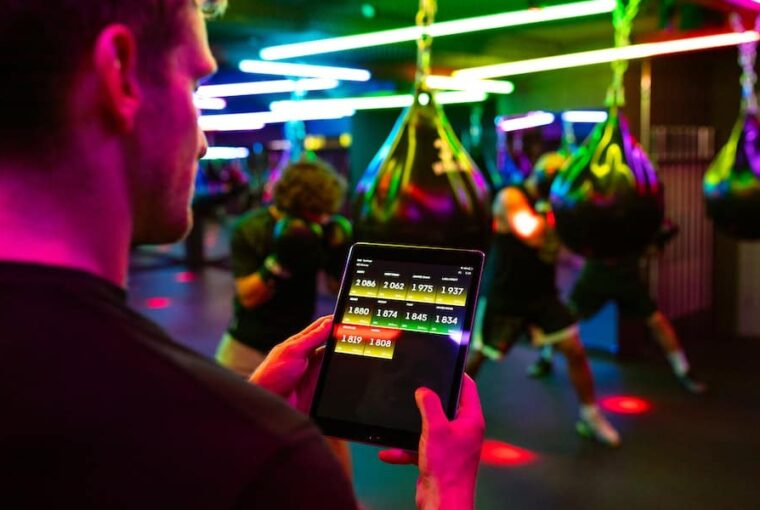In today’s hectic world, fitness is a top priority for many people, and the need for customized fitness solutions is increasing daily. Pioneers in personal trainer app development have transformed the fitness industry (please check the Topflight blog to know more). In this article, we’ll go over fitness app development and how to create your own workout app.
Why Creating Personal Training Apps Is A Good Idea
Personal training apps provide exceptional ease by allowing customers to enjoy guided workouts anytime and from anywhere. These apps include detailed exercise lists, timings, music integration, and even body-measurement tools. Personal trainer apps also encourage accountability by sending workout reminders, resulting in ongoing improvement. They provide scheduling flexibility, making fitness more accessible for everyone. Furthermore, they are less expensive than employing a live trainer. In short, you can create a gym app to make your name pop in this thriving industry.
Fitness Apps That Are Big Players In The Market
MyfitnessPal
MyFitnessPal dominates the fitness app market thanks to its intuitive design and extensive functionality. Users can keep tabs on their calorie intake and expenditure thanks to the app’s vast database of foods and exercises. The app’s compatibility with other fitness trackers is another reason it’s so widely used by people who take an integrative approach to their health and wellness.
Samsung Health
Samsung Health tracks your activities and assists you in developing a healthy lifestyle. On the Samsung Health home screen, you can view various health records, add items to manage, such as daily steps, activity time, and body weight, and adjust them all by simply long-pressing the screen.
WW (Weight Watchers)
When it comes to losing weight, Weight Watchers has it figured out. You learn more about yourself thanks to their comprehensive evaluation. The app then uses that information to recommend a weight loss program tailored specifically to you intelligently. It provides hundreds of on-demand, equipment-free workouts to assist in weight loss and lifestyle change.
Google fit
Google Fit tracks your runs, walks, and bike rides in real time so you can get fast feedback and see how you’re doing. The fitness software will track your speed, pace, route, and more using the sensors on your Android phone or Wear OS by Google Wearable. It also displays your Heart Points and step totals for the day.
Basic Overview Of Personal Training Apps Available Out There
Video-based apps
FitStar Personal Trainer is a fantastic example of a video-based personal trainer app development, as it provides high-definition (HD) content with a large range of workouts and routines. When installing the app on your device, you’ll be prompted to provide some basic information, including your intended workout time. Also, new actions are always being added to the application.
Illustration-based apps
The Yazio Calorie Counter is a free fitness tracker with an extensive illustration collection dedicated to nutrition. The app not only counts calories but also educates users on optimal diets.
3D apps
iMuscle 2 is an interactive 3D model that allows you to target specific muscle groups. After selecting, the app will provide video demonstrations of workouts specifically targeting that area.
Text-based apps
The CrossFit mobile app has a newsfeed stocked with fitness-related content and exercise plans. The application also keeps track of the user’s exercise history over time.
Personal Training Apps According To Niches
Nutrition apps
The primary goal of nutrition applications is to empower users to make healthier food decisions. To encourage healthy eating, they include tools like calorie counting, meal planning, and a database of millions of foods.
Fitness tracking apps
The main focus of fitness-tracking applications is to track exercise and other forms of physical activity. Users can log their workouts, monitor their step counts and heart rates, and get a more accurate picture of their fitness development.
Health consultation apps
With the use of health consultation apps, users can schedule remote consultations and guidance from medical specialists, including doctors and nutritionists. They make it simpler for people to get the medical care they need and learn how to take better care of themselves.
Medication and yoga apps
This category of apps has two separate functions. Apps that help people keep track of their medications and refills are becoming increasingly popular. On the other hand, yoga apps help users unwind and stretch their muscles by leading them through specific yoga practices. These apps are necessary for those who care about their physical and mental health to stay in good shape.
Costs Involved In Developing Fitness Apps
The cost of health and fitness app development is affected by project specifics and team hourly rates. Here’s a breakdown: Planning and design cost 40 hours, user interface and experience cost 60 hours, development costs 400 hours, testing costs 80 hours, and post-launch maintenance costs 40 hours. A simple single-platform app can range from $15,000 to $30,000, while a cross-platform app can cost up to $50,000. These figures should give you an idea of your project’s prospective costs.
Fitness App Development- Developing A Top-Tier App
Follow these steps to create a personal trainer fitness app:
Research opportunities
Identify market gaps and target audience preferences. Investigate competitors’ offerings and read user reviews to grasp their pain areas and expectations better. This study will create the groundwork for a successful fitness app.
Listing Features
Listing the features of your fitness app is an important step. Define what makes your app unique, whether it’s workout tracking, dietary planning, or community interaction. Prioritize key features and design with user usability in mind. A well-defined feature list will guide your development process.
Defining budget and hiring development teams
Create your budget early in the process to avoid financial surprises. Set aside finances for growth, marketing, and continuous maintenance. When hiring a development team, consider their competence in mobile app development, UI/UX design, and fitness technologies.
Proactive development
Continuous iteration and improvement are part of proactive development. Begin with an MVP to test the core functionality of your application. Gather user input and make any necessary changes. Maintain a flexible approach to respond to changing consumer needs and market trends.
Release/deployment
Launching your fitness app demands careful preparation. Ensure the app is accessible on popular platforms such as iOS and Android stores. Comply with app store requirements, undertake extensive testing, and develop a strong marketing strategy. Gaining user traction requires a successful launch.
Monitoring results and feedback
Once your fitness app is up, frequently track its performance. Monitor user engagement, retention rates, and feedback. Analyze data to find areas for improvement and prioritize updates accordingly. Maintaining your app’s competitive edge and user base requires constant attention and a willingness to adapt to feedback.
Final Verdict
In conclusion, fitness app development is a promising venture. Planning, specifically research, budgeting, and choosing a team, are important. The key to success is user feedback and proactive development.




